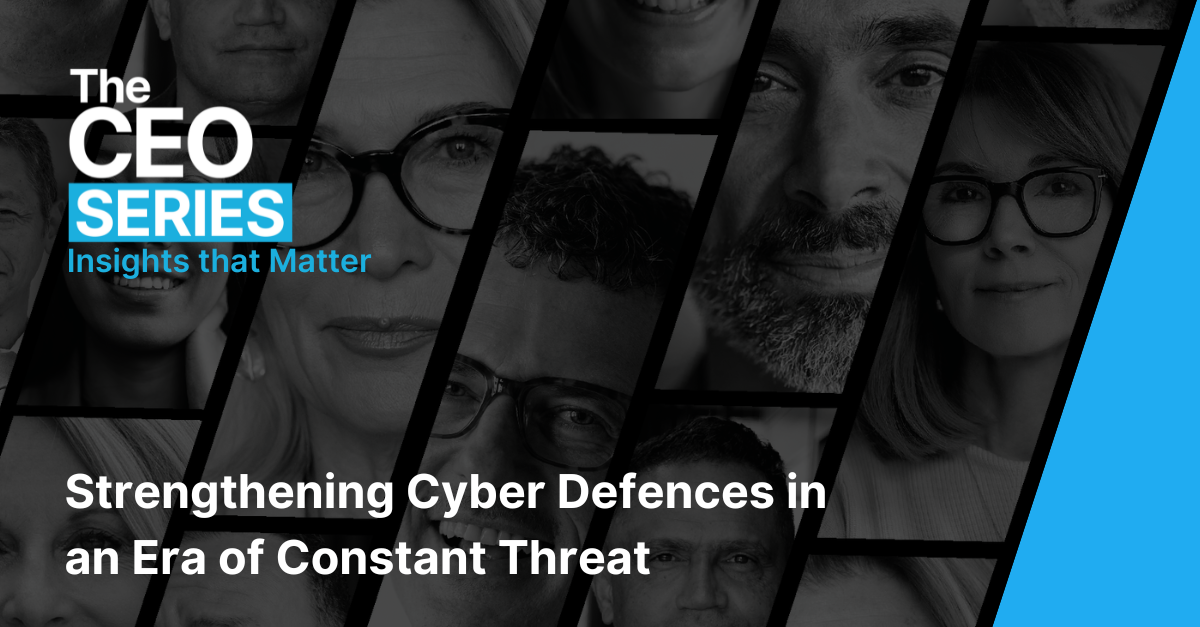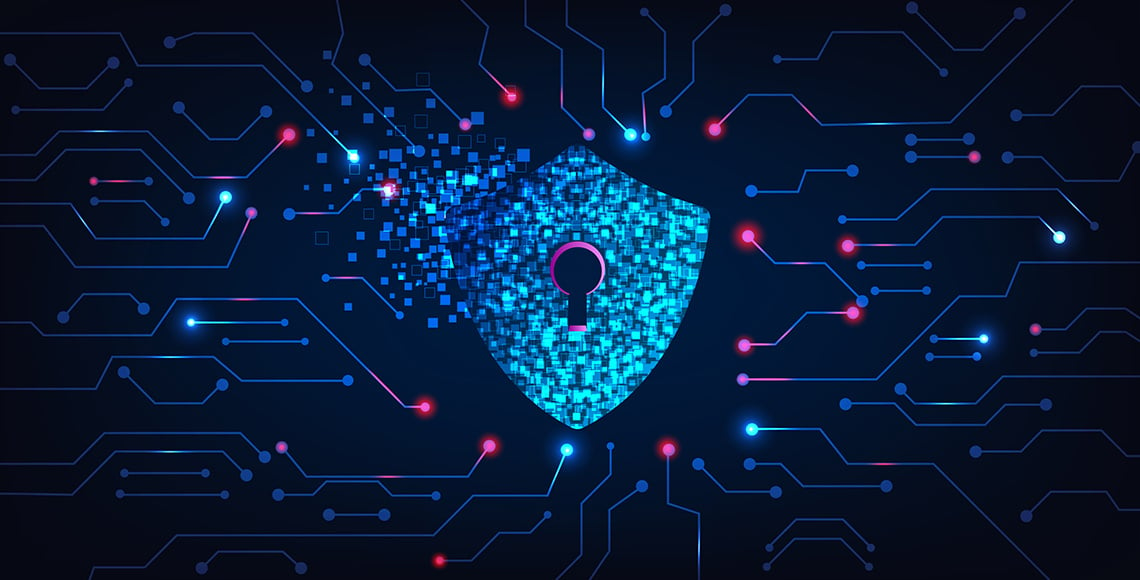5 min read
Strengthening Cyber Defences in an Era of Constant Threat
The CEO Institute Aug 14, 2025 11:33:10 AM

The Business Risk That Can No Longer Wait
Australia faces a relentless wave of cyber threats, with businesses confronting around 164 cyber incidents every day - an average of one attack every nine minutes. These persistent breaches contributed to an annual financial toll exceeding $3 billion in 2025 alone. Meanwhile, New Zealand has also seen sharp increases, with cyber incidents costing NZ$7.8 million during the first quarter of 2025 - a 14.7% rise marking one of the highest quarterly losses recorded. For leaders across both countries, the urgency of strengthening cyber defences has never been greater.
For CEOs and business owners across Australia and New Zealand, these statistics represent an existential business reality that demands immediate, personal leadership response.
Two Worlds, One Urgent Challenge
Whether you're leading a listed enterprise or building a small business from the ground up, cybersecurity has become the great equaliser of business risk. Yet the challenges - and opportunities - differ dramatically based on your organisation's scale and resources.
For enterprise leaders, cyber resilience offers a competitive differentiator that can drive measurable business performance. Research shows cyber-resilient organisations achieve 16% higher revenue growth and 21% better cost reduction outcomes compared to their peers. The challenge lies in translating technical complexity into board-level strategic decisions and building authentic partnerships between CEOs and Chief Information Security Officers.
For SME leaders, the stakes feel more immediate and personal. With 43% of all cybercrime targeting small businesses, and average breach costs of $173,000 potentially spelling business closure, cybersecurity represents basic survival rather than strategic advantage. The brutal reality is that only 48% of small businesses describe themselves as prepared for a cyber incident, despite facing one-in-three odds of being attacked within six months.
Yet both worlds share a common truth: cybersecurity decisions made today will determine whether your business thrives or merely survives the digital transformation ahead.
Rethinking Defence Architecture: Beyond Perimeters
The traditional approach to cybersecurity - building higher walls around your digital perimeter - has become dangerously obsolete in our cloud-first, remote-work reality. Business Email Compromise attacks alone cost Australian businesses $84 million in 2024, with 75% of these incidents successfully bypassing multi-factor authentication. The message is clear: perimeter defence is insufficient when threats operate from within your trusted networks.
Zero Trust architecture represents a fundamental shift in security thinking - never trust, always verify - but implementing it requires more than technological change. It demands organisational transformation that touches every business process, from how employees access systems to how partners integrate with your operations. The Australian Government's current implementation of comprehensive Zero Trust frameworks across all sectors signals this approach is becoming the baseline expectation for cyber maturity, not an advanced option.
For enterprise organisations, Zero Trust implementation becomes a strategic enabler that can support business agility while maintaining security rigour. For smaller businesses, it might start with basic principles - continuous identity verification and least privilege access - implemented through managed services rather than in-house expertise. The key insight is that Zero Trust thinking scales from the smallest startup to the largest corporation, adapting to resources while maintaining core security principles.
The transformation requires sustained CEO commitment because it challenges comfortable assumptions about trust, efficiency, and operational convenience. But in an environment where a single compromised credential can expose your entire operation, Zero Trust has evolved from best practice to business necessity.
Culture Eats Security Strategy for Breakfast
Technology alone cannot secure an organisation - people remain the critical variable in every cyber equation. Small businesses bear this truth most acutely, with limited resources magnifying the impact of human error or negligence.
The cultural transformation required goes beyond traditional awareness training to embed security thinking into operational DNA. This means creating environments where reporting a suspicious email earns recognition rather than eye-rolls, where security considerations influence every process decision, and where cyber risk becomes everyone's responsibility rather than IT's problem.
The CEO-CISO Partnership Revolution.png?width=360&height=720&name=TakeAway%20Box%20-%20Talent%20CEO%20Issues%20(3).png)
The most successful cyber programs emerge from authentic partnerships between CEOs and Chief Information Security Officers - relationships built on mutual respect rather than delegation of accountability. This partnership model requires CEOs to develop sufficient cyber literacy to engage meaningfully in strategic security discussions without becoming technical experts.
For enterprise leaders, this means regular strategic alignment sessions that connect security initiatives with business priorities and shared performance metrics that measure both technical improvements and business outcomes. The CISO becomes a strategic partner in business enablement rather than the guardian of restrictions. For smaller businesses, this partnership might involve external CISO services or managed security providers who can bridge the expertise gap while maintaining strategic alignment with business objectives.
Effective partnerships share common characteristics: collaborative stakeholder engagement where both leaders participate in board reporting and crisis communications, and joint investment planning that ensures cybersecurity budgets align with identified business risks rather than generic industry benchmarks. This co-responsibility model enables more informed decision-making during crisis moments and ensures cybersecurity considerations integrate seamlessly into strategic planning.
Board Governance: From Oversight to Strategic Enablement
Boards across Australia and New Zealand increasingly recognise cybersecurity as a strategic priority requiring director-level competency rather than passive oversight. The Institute of Directors New Zealand and the Australian Institute of Company Directors both emphasise that effective cyber governance demands baseline understanding of risk assessment, strategic alignment, and performance measurement.
Modern cyber governance requires boards to see cybersecurity as fundamental business risk rather than technical complexity. This perspective shift enables more effective oversight and strategic decision-making while supporting management through informed questioning and resource allocation.
The Business Value Creation Imperative
Forward-thinking leaders increasingly view cyber resilience as a competitive differentiator rather than a necessary cost. The mathematics are compelling: cyber-resilient organisations report average annual savings of $371,000 through reduced threat exposure, faster incident response, and improved operational continuity.
For enterprise organisations, this translates into strategic advantages that support market expansion, customer acquisition, and stakeholder confidence. Enhanced customer trust and loyalty result from demonstrated commitment to data protection. Improved operational efficiency emerges through reduced downtime and more reliable business processes. Strategic agility enables confident adoption of new technologies and business models without excessive security constraints. Stakeholder confidence supports easier access to capital, partnerships, and market opportunities.
For small businesses, the value proposition focuses on survival and growth enablement. Basic cyber hygiene prevents business-ending incidents that could destroy years of hard work and investment. Customer confidence becomes a competitive advantage in markets where data protection concerns influence purchasing decisions. Operational continuity protects productivity and revenue streams that smaller businesses cannot afford to lose.
The transformation requires viewing cybersecurity investments through a strategic lens - asking not just "What threats are we preventing?" but "What business capabilities are we enabling?" This mindset shift opens conversations about cybersecurity as business enablement rather than risk mitigation alone.
Crisis Preparedness: When Prevention Meets Reality
Even with world-class technology and comprehensive training, cyber incidents remain inevitable. The critical differentiator lies in organisational response capability and the speed with which you can detect, contain, and recover from attacks. Research consistently shows that cyber-resilient leaders detect threats 36% faster and contain them 46% faster than their peers, with breach costs typically 2-3 times lower.
Crisis readiness involves tested incident response plans with clearly defined roles and pre-established communication strategies that balance transparency with reputation protection. It requires clear decision-making authority for critical moments and recovery capabilities that enable rapid operational restoration while maintaining stakeholder confidence.
The reputational cost of confused, delayed responses often exceeds initial breach damage, making crisis preparation a strategic investment rather than operational overhead.
The Leadership Moment
Cybersecurity has become the defining leadership challenge of our digital economy. The threats continue evolving, the stakes keep escalating, and traditional approaches prove insufficient for current realities.
Your organisation's digital resilience - technical, operational, and human - becomes your greatest strategic asset in an environment where cyber threats are inevitable. The question for every leader is not whether these threats will test your organisation, but whether your leadership will prove equal to the challenge when they arrive.
Cyble. "NCSC Cyber Security Insights Q1 2025 Rising Financial Losses." June 2025.
CyberCX. "CyberCX 2025 Threat Report reveals cyber landscape is changing." April 2025.
Otto IT. "Biggest Australian Cyber Breaches in 2025." June 2025.
Australian Criminal Intelligence Commission. "Cybercrime." 2025.
Public Spectrum. "Australia advances zero trust cybersecurity." August 2024.
Eftsure. "Business email compromise threat grows, reveals 2024 ASD report." August 2025.
Government News. "Embedding a zero trust cybersecurity strategy." February 2025.
Australian Institute of Company Directors. "Cyberber Security Governance Principles | Version 2." July 2025.
Security Brief NZ. "NZ cyber incidents cause NZD $7.8 million loss in early 2025." June 2025.
Peninsula Group Limited. "Is Cybersecurity the Need of the Hour for Small Businesses." July 2025.
Institute of Directors New Zealand. "Cybersecurity resources for boards." October 2023.
Recorded Future. "The Impact of Cybersecurity on Business and Brand Risk Reduction." April 2025.

11 min read
Why CEOs are Shunning ESG
The shock finding: zero per cent Mid-2025, we surveyed our CEO and business owner members across Australia and New Zealand. The result that caught...

3 min read
Balancing AI with Human Authenticity
How Should I Position My Company to Capitalise on AI Without Losing Human Authenticity? Artificial intelligence is no longer a futuristic promise -...

Stretching the Castle Walls: Three Cybersecurity Questions Every CEO Must Ask
Fred Thiele Chief Information Security Officer Interactive
